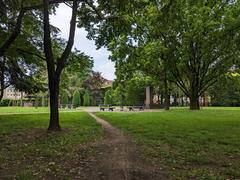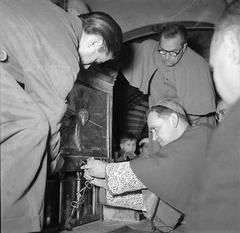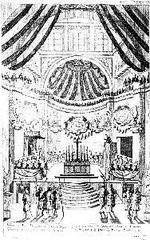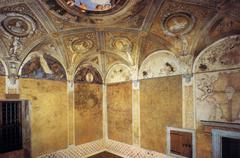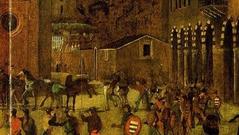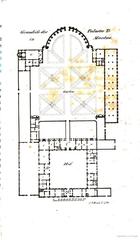
Mantua, Italy: A Whimsical Adventure Through the City of Lakes and Legends
Date: 04/07/2025
Welcome to Mantua: Renaissance Splendor and Lakeside Magic
Imagine a city where the cobblestones tell stories, the scent of sbrisolona and espresso floats through Renaissance piazzas, and every alleyway invites discovery. Welcome to Mantua (Mantova to locals), a hidden Italian jewel encircled by sparkling lakes and steeped in centuries of legend, artistry, and culinary delight. Here, ancient Etruscan roots entwine with Renaissance grandeur, while lively festivals and friendly locals keep the city’s heart beating vibrantly every season (Walks of Italy).
Mantua isn’t reserved for historians or romantics—it’s a playground for curious wanderers. Lose yourself in porticoed streets, savor local delicacies, and let the city’s blend of art, history, and daily life surprise you at every turn (The Italy Edit). Whether you’re here for the opera, the architecture, or simply the lakeside tranquility, Mantua promises an experience as rich as its storied past (Culture Activities).
The Mantua Treasure Map: What Awaits You
Mantua: Italy’s Best-Kept Renaissance Secret
Step into Mantua—where Shakespeare set a pivotal scene in “Romeo and Juliet,” and Virgil, the poet of the “Aeneid,” was born. The city, draped in morning mist and golden light, feels like a living stage. From the aroma of almond cake in ancient alleys to the echo of bells over mirror-like lakes, Mantua is a place where history, art, and daily life blend seamlessly.
A City Embraced by Water
Set on a peninsula and surrounded on three sides by the Mincio River, Mantua boasts artificial lakes that have guarded its secrets for centuries. Locals say the water keeps the city’s mysteries in—and invites the curious to explore them.
Ancient Roots and Roman Heritage
Dating back to Etruscan times (6th century BCE), Mantua’s roots are as deep as they are dramatic. Named for Mantus, the god of the underworld, the city has always had a flair for legend. Virgil’s statue in Piazza Virgiliana pays homage to its greatest ancient son and is a favorite selfie spot.
Mini-Quest: Trace the remnants of the Roman street grid beneath modern piazzas, and look for ancient walls near Piazza Sordello.
Medieval Independence and Civic Identity
During the Middle Ages, Mantua gained independence and developed a distinct civic pride. The Rotonda di San Lorenzo (1082), the city’s oldest church, is a red-brick Romanesque gem. The Torre dell’Orologio (Clock Tower) anchors Piazza delle Erbe and brings luck to those who pause beneath it.
Local Lingo: A cheerful “A sèm a Mantua!”—“We’re in Mantua!”—breaks the ice with locals.
The Gonzaga Dynasty and the Renaissance Bloom
With the rise of the Gonzaga family in 1328, Mantua entered its golden age. The Gonzagas transformed the city with grand palaces and patronage of artists like Mantegna, whose Camera degli Sposi frescoes in the Ducal Palace are a masterclass in illusion. At Palazzo Te, Giulio Romano’s imaginative frescoes and optical tricks dazzle visitors.
Insider Tip: Look for the hidden ceiling hatch in the Ducal Palace, rumored to have aided midnight Gonzaga escapes—or late-night snacking!
Hidden Gems & Local Legends
- Gelateria Loggetta: Try the pistachio gelato and stroll the lakeside promenade—just beware of swan envy.
- Giardino dei Semplici: A tranquil Renaissance herb garden behind San Francesco church, perfect for a quiet pause.
- Osteria dell’Oca: Savor “risotto alla pilota”—a hearty rice dish with sausage, echoing the city’s agricultural roots.
Do’s and Don’ts in Mantua
- Do: Greet shopkeepers with “Buongiorno!” before browsing.
- Don’t: Order cappuccino after 11am—opt for espresso instead.
- Do: Enjoy sbrisolona with your hands, never a fork.
- Don’t: Expect dinner before 8pm; embrace the slow evening pace in Piazza delle Erbe.
Design Your Mantua Experience
One-Day Renaissance Tour: Start at the sprawling Ducal Palace, visit the Rotonda di San Lorenzo, take in the marvels of Palazzo Te, and finish at Teatro Bibiena, where Mozart once performed.
Foodie’s Itinerary: Breakfast on torta delle rose at Pasticceria Antoniazzi, explore the Saturday market for cheeses and salumi, lunch on tortelli di zucca at Trattoria Cento Rampini, and toast with Lambrusco Mantovano.
Mantua Through the Seasons
- Spring: Blossoming wisteria and shimmering lakes make for perfect strolls.
- Summer: Open-air concerts and lakeside gatherings define the festive spirit.
- Autumn: Truffle fairs and golden foliage delight the senses.
- Winter: Christmas lights, mulled wine, and uncrowded museums offer cozy charm.
Myths, Surprises, and Artistic Grandeur
Mantua rivals Florence and Tuscany’s Renaissance treasures, yet remains refreshingly crowd-free. The city inspired Verdi’s “Rigoletto” and continues to charm visitors with its operatic ambiance and welcoming locals.
Local Lingo to Try
- Gnaro: Friend or mate—drop it casually at the bar.
- Te set propri in gamba!: “You’re really on the ball!”—use it to compliment a savvy travel companion.
FAQ: Quick Answers for Travelers
- Is Mantua safe? Yes—just watch for bustling cyclists and friendly ducks.
- Getting around: The city center is flat and walkable; bikes are popular for exploring further afield.
- Can I see it all in a day? Yes, but lingering unlocks more discoveries.
- Must-try foods: Don’t miss tortelli di zucca and sbrisolona.
- English spoken? Many locals speak English, but a smile and “Grazie!” go far.
Main Attractions in Mantua
Palazzo Ducale (Ducal Palace)
Mantua’s Ducal Palace is a sprawling complex of art, history, and gardens, once the seat of the Gonzaga family. The renowned Camera degli Sposi features Andrea Mantegna’s illusionistic frescoes, while dozens of grand halls, chapels, and gardens await exploration (Walks of Italy, Culture Activities).
Palazzo Te
A masterpiece of Renaissance whimsy, Palazzo Te was built as a pleasure palace for Federico II Gonzaga. Giulio Romano’s frescoes, especially in the Sala dei Giganti, envelop visitors in mythological spectacle (Culture Activities).
Piazza Sordello
The city’s main square is framed by the Ducal Palace, the Duomo, and stately palazzi. It’s the focal point for festivals and local gatherings, notably the annual Festivaletteratura (Walks of Italy).
Piazza delle Erbe & Rotonda di San Lorenzo
Bustling with markets and history, Piazza delle Erbe is home to the medieval Palazzo della Ragione, the iconic Clock Tower, and the ancient Rotonda di San Lorenzo—still resonant with centuries of stories (Walks of Italy).
Basilica di Sant’Andrea
Leon Battista Alberti’s architectural marvel, the basilica boasts harmonious proportions and houses a revered relic. Its vast nave and ornate chapels are a highlight for art lovers (Walks of Italy).
Teatro Bibiena
This intimate, late Baroque theater hosted Mozart as a young prodigy. Its ornate balconies and stuccoed interiors make it a must for music and architecture aficionados (Walks of Italy).
Sabbioneta
A UNESCO-listed Renaissance town, Sabbioneta is a short journey from Mantua and showcases ideal Renaissance urban planning, the Teatro all’Antica, and lush gardens (Walks of Italy).
Outdoor Activities and Lakes
Mantua’s three artificial lakes—Lago Superiore, Lago di Mezzo, and Lago Inferiore—offer scenic walks, cycling, birdwatching, and boat tours. The Bosca Fontana Nature Reserve is a haven for outdoor enthusiasts (Walks of Italy).
Day Trips and Surrounding Villages
Venture to San Benedetto Po with its grand abbey, or Castellaro Lagusello overlooking a heart-shaped lake. Nearby art cities like Verona and Parma are easily reached, as is Lake Garda via a dedicated cycle path (Gigi Griffis).
Local Cuisine of Mantua
Culinary Heritage
Mantua’s gastronomy blends courtly traditions with rustic abundance, featuring rice, pumpkin, freshwater fish, and pork, all shaped by the city’s fertile setting and historical influences (Culture Activities).
Signature Dishes
- Tortelli di Zucca: Pumpkin-filled pasta with amaretti and Parmigiano, dressed in butter and sage—a signature sweet-savory combination (Walks of Italy).
- Risotto alla Pilota: Hearty rice with Mantuan sausage, reflecting the city’s agricultural roots (Culture Activities).
- Bigoli con le Sardelle: Thick pasta with sardine or anchovy sauce, garlic, and parsley—a nod to Mantua’s waterways (Walks of Italy).
- Luccio in Salsa: Poached pike with tangy caper and anchovy sauce, a lakeside classic (The Italy Edit).
- Stracotto d’Asino: Robust donkey stew, a dish rooted in rural tradition.
Salumi and Cheeses
Sample salame mantovano and local cheeses, often served with gnocco fritto. An “affettati misti” platter is a typical starter (The Italy Edit).
Desserts
- Torta Sbrisolona: Crumbly almond cake, best enjoyed broken by hand (Walks of Italy).
- Torta Elvezia: Almond meringue, buttercream, and sponge layers—a nod to Mantua’s Swiss connections.
- Gelato: Try local favorites at Gelateria Loggetta or Cremeria del Corso (The Italy Edit).
Where to Eat
From rustic trattorias to acclaimed restaurants, Mantua’s dining scene is vibrant:
- Antica Osteria Leoncino Rosso: Authentic Mantuan fare (The Italy Edit).
- L’Ambasciata and Freddi: Celebrated dining spots (Fodor’s).
- Osteria Numero 2 and Trattoria alla Pergola: Local favorites (Michelin Guide).
For lighter meals, opt for freshwater fish, salads, or cheese platters (Reddit).
Food Experiences and Markets
Join a food tour or aperitivo crawl to sample Mantua’s best bites, or browse local markets for fresh produce, artisanal cheeses, and Lambrusco Mantovano (Culture Activities).
Seasonal and Practical Tips
Mantua’s best culinary experiences align with spring, early summer, and autumn. Reserve ahead at popular spots, especially during festivals. For authenticity, seek out eateries loved by locals (Walks of Italy, Gigi Griffis).
Welcome to Mantua, Where Every Step is a Symphony
Stroll beneath sun-warmed arcades, listen to the gentle clang of bicycle bells, and let each bite and vista compose your own Italian symphony. Mantua isn’t just a destination—it’s an invitation to become part of its living, breathing story.
Mantua Like a Maestro: Practical Guidance
Local Lingo, Customs, and Currency
- “Ciao” (hello/goodbye): Use generously.
- “Un caffè, per favore” (one coffee, please): Expect espresso, not a mug.
- “Dove si trova…?” (where is…?).
- Carry euros—coins are handy for markets; expect a “coperto” at restaurants.
- Dress modestly in churches; keep a scarf handy.
- For the bill, say “Il conto, per favore!” and consider rounding up as a tip.
Sensory Delights
Hear the city’s rhythms, taste risotto alla pilota, and indulge in crumbly sbrisolona—best eaten by hand.
Getting Around
- By Train: Arrive at Stazione di Mantova; city center is a pleasant walk away.
- By Car: Beware ZTL zones; use Campo Canoa for parking and enjoy a shuttle into town.
- On Foot/Bike: The city is compact and flat—perfect for exploring by foot or cycle.
- Public Transport: Buses are available; tickets from tabacchi.
Hidden Corners
- Casa del Mantegna: A quiet Renaissance courtyard for a peaceful escape.
- Aperitivo: Try a Pirlo at Piazza Broletto at golden hour.
- Gelato: Sample unique flavors at Cremeria del Corso—ask for “zuppa inglese.”
Seasonal Highlights
- Spring: Wisteria and regattas liven the lakesides.
- Summer: Open-air concerts and night markets abound.
- Autumn: Chestnut vendors and golden leaves create a warm atmosphere.
- Winter: Christmas lights and markets transform the city.
Quickfire FAQ
- Safety: Very safe—just use standard precautions.
- Tap Water: Drinkable and fresh.
- Ticket Validation: Remember to stamp your train/bus ticket.
- Rainy Day Activities: Visit the Ducal Palace, try local pastries, or browse indie bookstores.
- Top Selfie Spot: Rooftop of Palazzo della Ragione at sunset.
Your Mantua Story Awaits: Unlock the City with Audiala
From grand palazzi to lakeside sunsets, Mantua invites you to discover its charm at your own pace. Download the Audiala app for audio stories, hidden histories, and local insights—your insider’s guide to a city where every traveler can play the leading role (Reddit, Gigi Griffis, Culture Activities).
Whether you’re savoring tortelli di zucca, seeking out secret gardens, or simply enjoying the view over the Mincio, Mantua rewards curiosity and wonder. Embrace its stories, linger in its piazzas, and let Audiala guide your adventure—because in Mantua, every visitor is a star.
Sources
- Walks of Italy (n.d.). Things to do in Mantua city guide. (Walks of Italy)
- The Italy Edit (n.d.). Mantova travel guide. (The Italy Edit)
- Culture Activities (n.d.). Mantua activities. (Culture Activities)
- Reddit (2024). Mantova lighter local food. (Reddit)
- Gigi Griffis (n.d.). Ask a local: What should I do, see, and eat in Mantua, Italy? (Gigi Griffis)
- Michelin Guide (n.d.). Mantova restaurants. (Michelin Guide)
- Fodor’s (n.d.). Mantua: Lombardy and the Lakes. (Fodor’s)
Audiala2024





